How to Use Eye Color Calculator
Our calculator is designed to be user-friendly and informative. Here's how to use it:
- Select Parent Eye Colors: Choose the eye color of parents from the dropdown menus.
- Input Grandparent Eye Colors: Select the eye colors of all four grandparents.
- Calculate: Click the "Calculate" button for the results.
- Interpret Results: The calculator will show probabilities for different eye colors, represented by colorful bars and percentages.
Remember, this calculator provides estimates based on general genetic principles and does not guarantee your child's eye color.
Understanding the Results
The calculator shows probabilities for various eye colors. Here's what the results mean:
- Higher percentages indicate a greater likelihood of that eye color
- Even colors with lower percentages are possible
- The results are based on known genetic factors and family history
The Science Behind Our Calculator
Our eye color calculator uses a simplified model of genetic inheritance, considering:
- The frequency of eye colors in the family
- Known patterns of dominant and recessive traits
- The complexity of multiple gene interactions
While not 100% accurate, it provides a fun and educational estimate based on current genetic understanding.
What Determines Eye Color?
Eye color is determined by multiple genes, with two main ones playing a significant role:
- OCA2 gene: Responsible for brown and blue eyes
- HERC2 gene: Affects the OCA2 gene's expression
These genes influence the amount and type of melanin (pigment) in the iris, giving eyes color.
Common Eye Colors
- Brown: The most common eye color worldwide
- Blue: Common in people of European descent
- Green: A rarer color, found in about 2% of the world's population
- Hazel: A combination of brown and green
- Gray: Similar to blue eyes, but with less melanin
- Amber: A golden or copper tone, relatively rare
- Heterochromia: Different colors in each eye or multiple colors in one eye
How Eye Color Is Inherited
Eye color inheritance is complex and doesn't follow simple dominant-recessive patterns. Here are some key points:
- Brown eyes are generally dominant over lighter colors
- Two blue-eyed parents usually have blue-eyed children, but exceptions exist
- Green and hazel eyes result from a combination of genetic factors
- A child's eye color can be different from both parents due to recessive genes
Factors Affecting Eye Color Prediction
Several factors can influence eye color prediction:
- Genetic Complexity: Eye color involves multiple genes, not just one or two.
- Recessive Genes: Parents can carry genes for eye colors they don't display.
- Genetic Mutations: Rare mutations can lead to unexpected eye colors.
- Ethnic Background: Different people have varying frequencies of eye color genes.
Interesting Facts About Eye Color
- Babies' eye colors can change in the first few years of life
- All blue-eyed people may share a common ancestor
- Eye color can affect sensitivity to light
- In rare cases, eye color can change in adulthood
- Heterochromia (two different eye colors) can be genetic or caused by injury or disease
Limitations of Eye Color Prediction
It's important to understand that eye color prediction has limitations:
- Genetic inheritance is complex and not fully understood
- Environmental factors can influence gene expression
- Rare genetic combinations can produce unexpected results
The calculator doesn't account for all possible genetic factors
Eye Color Descriptions
Description of the different eye colors in detail:
Brown Eyes
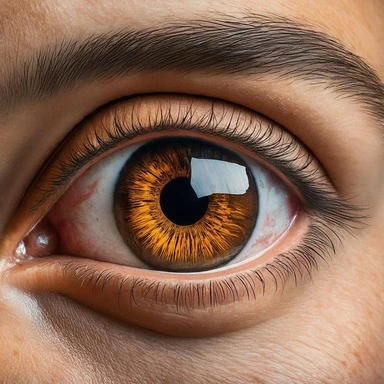
- Appearance: Range from light golden brown to deep chocolate
- Description: Most common eye color worldwide
- Image Suggestion: Close-up of a deep brown eye with warm undertones
Blue Eyes
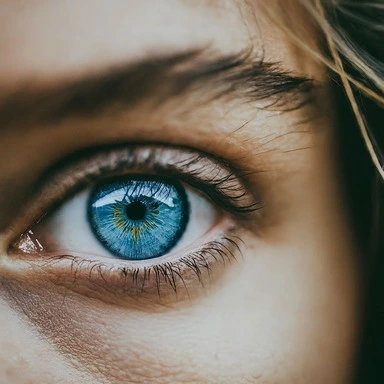
- Appearance: Can be light sky blue to deep ocean blue
- Description: Common in people of European descent
- Image Suggestion: Close-up of a vivid blue eye with slight variations in shade
Green Eyes
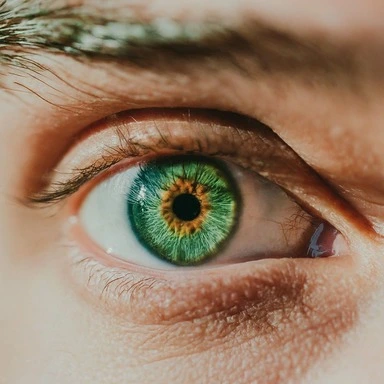
- Appearance: Various shades of green, sometimes with gold flecks
- Description: One of the rarest eye colors
- Image Suggestion: Close-up of a green eye with subtle gold or amber hints
Hazel Eyes
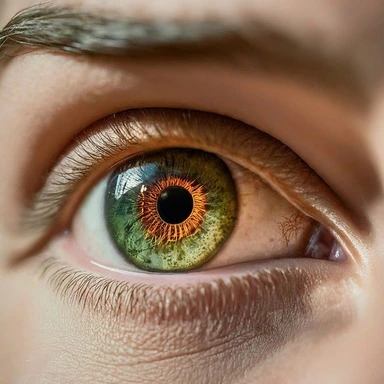
- Appearance: Mixture of green and brown, can appear to change color
- Description: Often mistaken for light brown or green
- Image Suggestion: Close-up of a hazel eye showing both green and brown tones
Gray Eyes
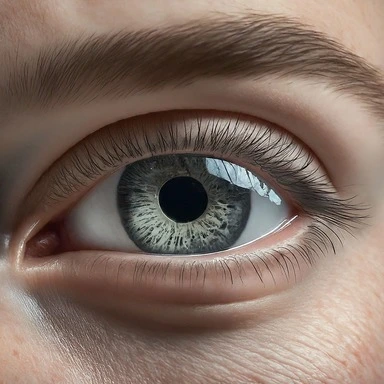
- Appearance: Ranging from light silvery gray to deeper slate
- Description: Often confused with blue eyes
- Image Suggestion: Close-up of a gray eye with a cool, clear appearance
Amber Eyes
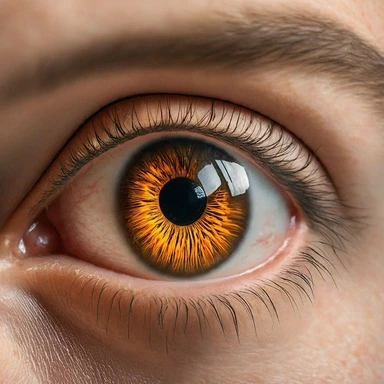
- Appearance: Golden or copper tone, similar to honey
- Description: Very rare, often mistaken for light brown
- Image Suggestion: Close-up of an amber eye with a distinctive golden hue
Heterochromia
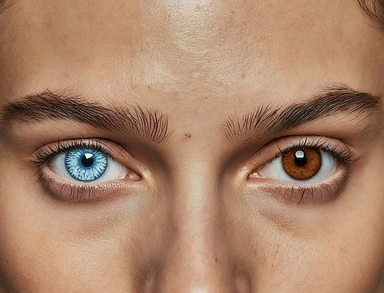
- Appearance: Two different colored eyes or multiple colors in one eye
- Description: Can be complete (two different colored eyes) or partial (multiple colors in one eye)
- Image Suggestion: Side-by-side close-ups of two differently colored eyes
Eye Color Prediction Chart
This chart shows the possibility of a child's eye color based on the eye colors of both parents. The eye color percentages are approximate and based on general genetic principles.
| Parent 1 | Parent 2 | Brown | Blue | Green | Hazel | Gray | Amber | Heterochromia |
| Brown | Brown | 75% | 6% | 7% | 7% | 2% | 2% | 1% |
| Brown | Blue | 50% | 30% | 7% | 7% | 3% | 2% | 1% |
| Brown | Green | 50% | 7% | 30% | 7% | 3% | 2% | 1% |
| Brown | Hazel | 50% | 7% | 7% | 30% | 3% | 2% | 1% |
| Blue | Blue | 1% | 80% | 7% | 7% | 3% | 1% | 1% |
| Blue | Green | 1% | 40% | 40% | 7% | 9% | 2% | 1% |
| Blue | Hazel | 7% | 30% | 30% | 25% | 5% | 2% | 1% |
| Green | Green | 1% | 25% | 60% | 7% | 4% | 2% | 1% |
| Green | Hazel | 7% | 20% | 30% | 35% | 5% | 2% | 1% |
| Hazel | Hazel | 7% | 15% | 25% | 45% | 5% | 2% | 1% |
Notes on the Prediction Chart
- These percentages are approximations and can vary based on specific genetic factors.
- Brown eyes are generally dominant, which is why they have higher percentages in many combinations.
- Two blue-eyed parents are highly likely to have a blue-eyed child, but other colors are still possible due to recessive genes.
- Green and hazel eyes have complex inheritance patterns, leading to varied outcomes.
- Gray and amber eyes are rarer, which is reflected in their lower percentages across combinations.
- Heterochromia is included with a small percentage across all combinations, as it can occur unexpectedly.
Using This Chart
- Use this chart as a general guide, not as a definitive prediction.
- Consider the eye colors of grandparents and other relatives for a more comprehensive understanding.
- Remember that genetic inheritance is complex, and surprises can occur.